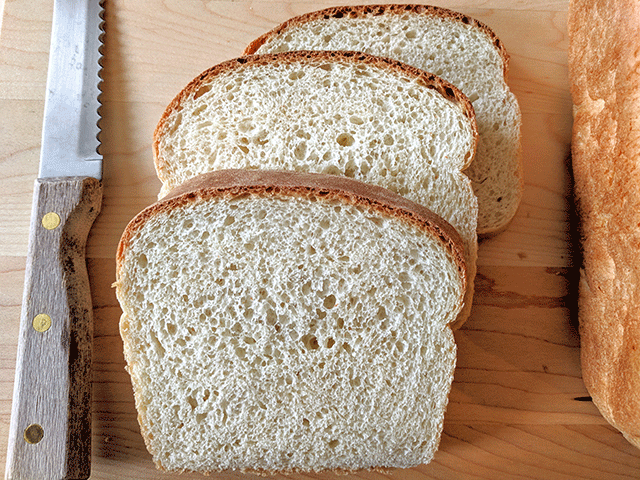
In a rush? You can skip to the Easy Cottage Bread Recipe at my Tumblr or you can jump to my Just the Basics section.
When I first started baking, I tried a lot of different recipes. And I failed at a lot of them. My loaves came out lumpy and misshapen. Some of my bread collapsed in the oven or burnt to a crisp.
With more practice, I managed to make a few loaves that looked a little bit more like bread, but they didn’t taste half as good as they looked. They were too bland or too salty or too sweet. I felt a bit like Goldilocks trying the different beds – one recipe was too big, another recipe was too hard, etc.
And then I stumbled across this easy cottage bread recipe, and it was just right.
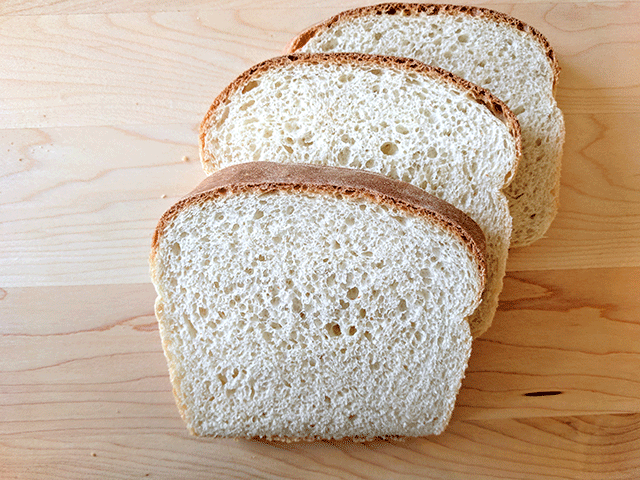
This recipe is my go-to bread recipe for just about everything now. When I need bread for sandwiches? This is the one I make.
When I need bread for French toast? I can count on easy cottage bread.
When I’m in a hurry and don’t want to spend all day waiting for bread to rise? You guessed it – I make cottage bread.
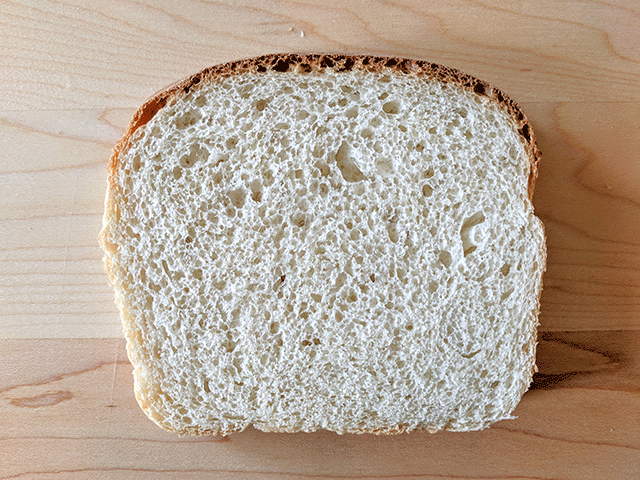
If you are just starting out and don’t think you can make bread, this is the recipe for you. This easy cottage bread convinced me I could make great bread any time I wanted.
Time
Prep time: 15-20 minutes
Rise time: 1 hour 30 minutes to 2 hours
Cook time: 35 minutes
Total time: Approximately 2 Hours 20 minutes to 3 hours
Ingredients
This easy cottage bread recipe only needs:
- 627 Grams (2 2/3 Cup) Warm Water
- 18 Grams (2 Tablespoons) Active Dry Yeast
- 17 Grams (1 Tablespoon) Salt
- 37 Grams (3 Tablespoons) White Granulated Sugar
- 28 Grams (2 Tablespoons) Butter
- 720 Grams (6 Cups) All Purpose Flour*
*Plus a little more flour for dusting
Additional Equipment
Here are a few items you’ll want to have available when you make cottage bread:
- Small and Large Mixing Bowls
- Wooden Mixing Spoon
- Measuring Cups and Spoons
- Pastry Cutter or Dough Chopper
- Two 9-inch by 5-inch pans
- Cooling Rack
This recipe makes two loaves – thus the two pans. However, you can easily cut this recipe in half if you only have one pan. Or, you could make multiple mini loaves depending on what you own.
As an Amazon associate, I do earn a small commission from affiliate links. However, I do not get paid for writing product reviews, and my opinions remain my own.
Instructions
Ready to dive into a fun new recipe? This easy cottage bread recipe is a breeze.
Mix Your Dough
Just stir the yeast into the bowl of warm water and stir until the grains dissolve. Set aside and allow the yeast to proof for 10 to 15 minutes.
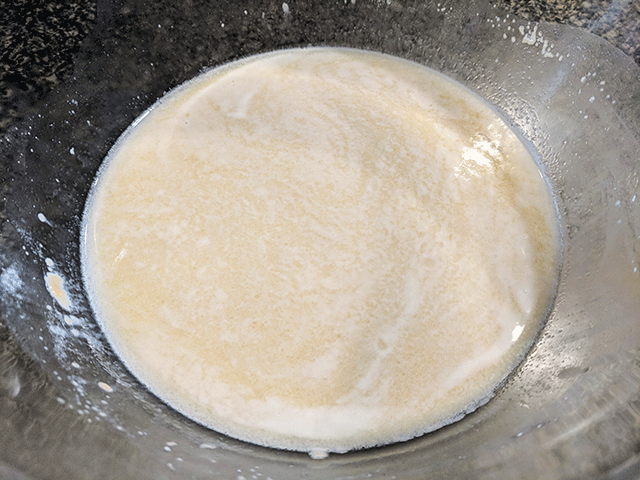
Once the yeast has proofed for a few minutes, add it to the flour, sugar, salt, and butter. Stir until well incorporated.
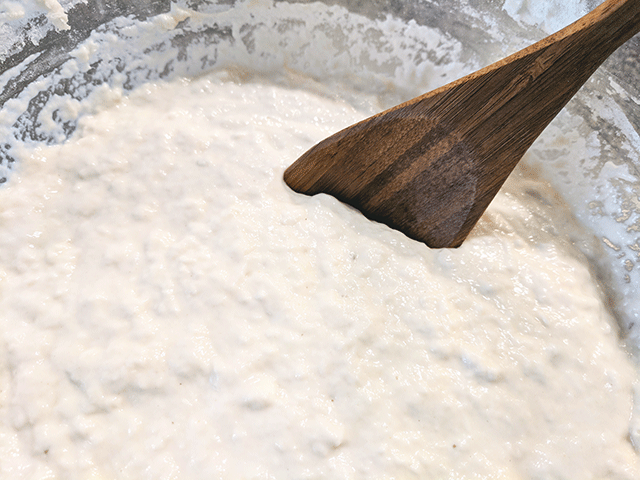
Once your dough starts coming together, turn your dough out onto a floured surface. Knead until the dough feels smooth but slightly tacky. If it feels especially sticky, feel free to add a little more flour and work it in. Shape it into a round ball.
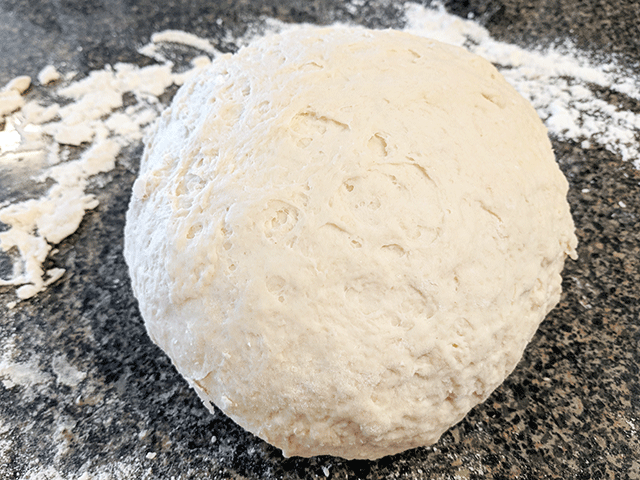
Let It Rise
Place your easy cottage bread dough into a lightly greased bowl and cover it. Allow it to rise for 45 minutes to an hour.
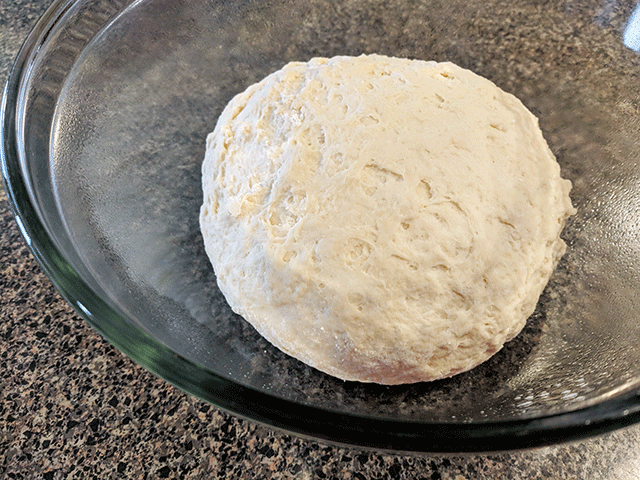
When your dough has doubled in volume, punch it down and turn it out onto your floured surface again. Use a pastry cutter or dough chopper to divide the dough into two pieces.
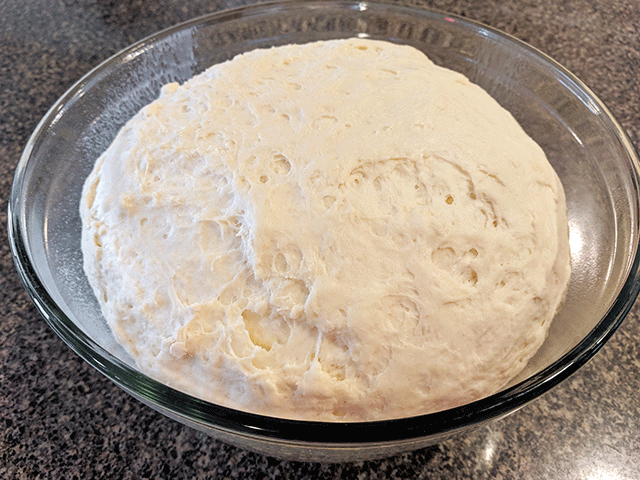
Fold the dough into a sandwich loaf (or just roll it around and squish it into the pan) and place into lightly greased baking pans. Let them rise again for 30 to 45 minutes, or until the dough slightly rises above the edge of the pan.
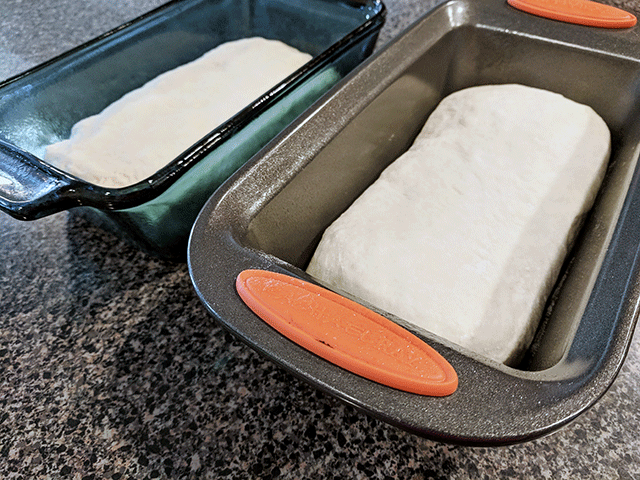
Gently press your finger into the dough. If it springs back immediately, it needs more time to rise. If it slowly springs back, it’s ready to go in the oven. Dough that collapses has over proofed. But don’t worry, it will still bake just fine.
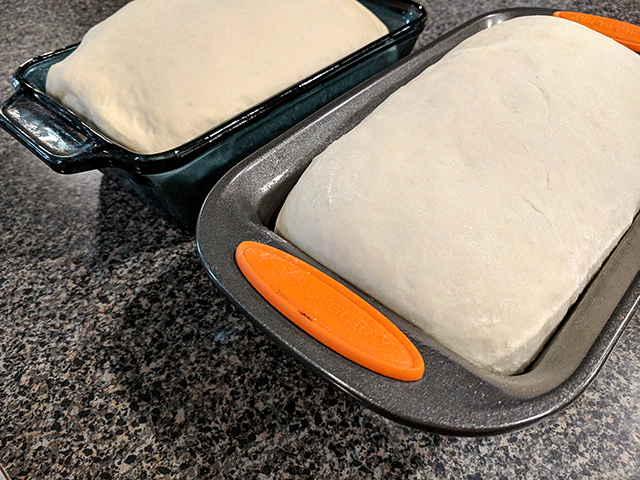
Bake Your Bread
Once your dough has risen, preheat your oven to 375 degrees Fahrenheit (190 degrees Celsius). Bake your loaves for 35 minutes. The tops should have a nice golden brown color and the bottoms will sound hollow when tapped.
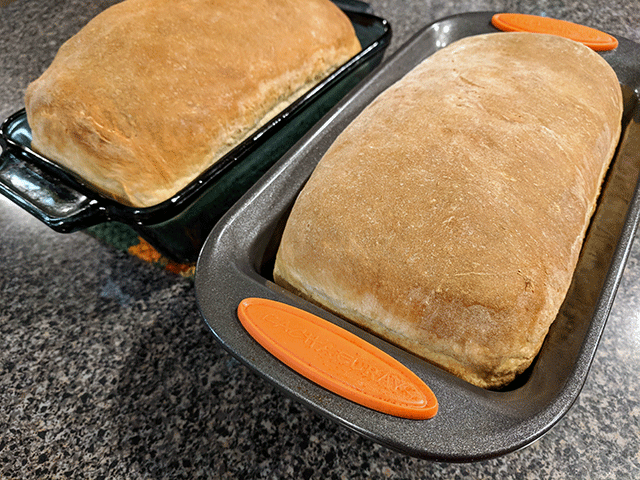
Turn your easy cottage bread out onto a cooling rack and allow to cool before slicing. I know it’s hard to wait when you have fresh bread right out of the oven, but the bread will finish baking in the middle while it sits. When you slice your bread too soon, the middle may turn a little gummy.
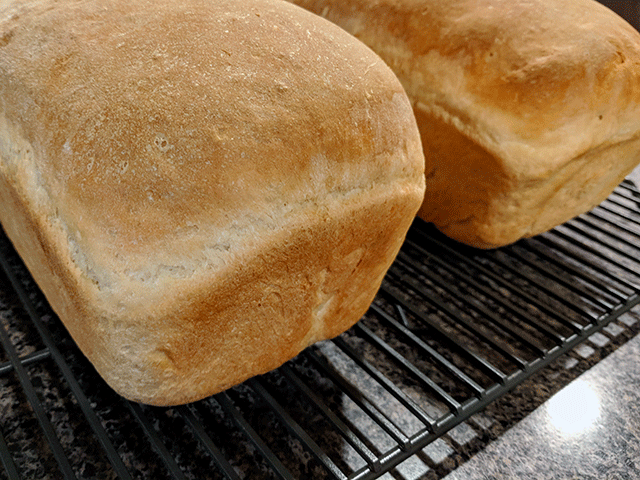
Once your bread has cooled, feel free to slice and enjoy. I prefer to eat freshly made cottage bread with just a smidgen of butter and honey.
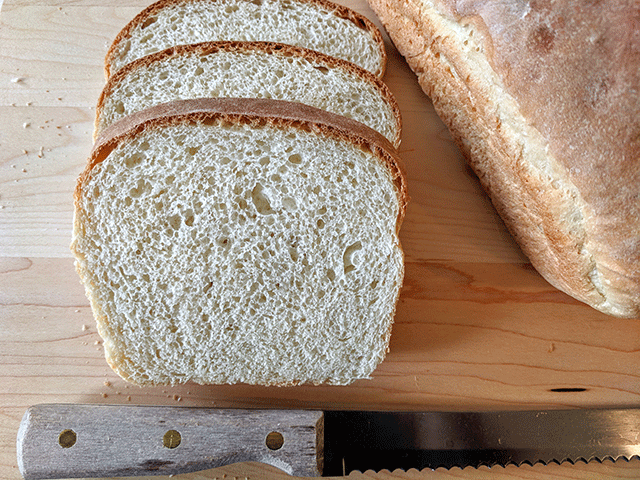
If you want a softer crust, feel free to cover your bread while it’s still warm from the oven. The bread will “sweat” and release steam that will keep your crust soft. Alternatively, you can brush the crush with a thin layer of butter.
Just the Basics

Easy Cottage Bread
Ingredients
- 627 Grams Warm Water (2 2/3 Cups)
- 18 Grams Active Dry Yeast (2 Tablespoons)
- 17 Grams Salt (1 Tablespoon)
- 37 Grams White Granulated Sugar (3 Tablespoons)
- 28 Grams Butter (2 Tablespoons)
- 720 Grams All-Purpose Flour (6 Cups)
Instructions
- Stir the yeast into the bowl of warm water and stir until the grains dissolve. Set aside and allow the yeast to proof for 10 to 15 minutes.
- Add flour, sugar, salt, and butter. Stir until well incorporated.
- Turn your dough out onto a floured surface. Knead until the dough feels smooth but slightly tacky. Shape into a round ball.
- Place your bread dough into a lightly greased bowl and cover it. Allow it to rise for 45 minutes to an hour.
- When your dough has doubled in volume, punch it down and turn it out onto your floured surface again. Use a pastry cutter or dough chopper to divide the dough into two pieces.
- Fold each round into a sandwich loaf and place in baking pans.
- Let them rise again for 30 to 45 minutes, or until the dough slightly rises above the edge of the pan.
- Preheat your oven to 375° Fahrenheit (190° Celsius). Bake your loaves for 35 minutes.
- Turn your bread out onto a cooling rack and allow to cool before slicing.
Notes
Secrets to Success
This easy cottage bread recipe is flexible and accommodating for beginning bakers. Don’t feel afraid to make mistakes with this one.
I once left out almost a cup of water, and though the bread had a denser consistency, it still tasted wonderful. Similarly, I once left out a cup of flour, and the dough was too sticky to knead properly. I scooped the dough into the pans anyway, just to see what would happen, and the bread still rose and tasted just fine (though it was a little gummy).
Feel free to play around with the flour to water ratios to see what texture best fits you.
Nutritional Information
Keeping track of your calories? Here’s the nutritional information for this easy cottage bread recipe:
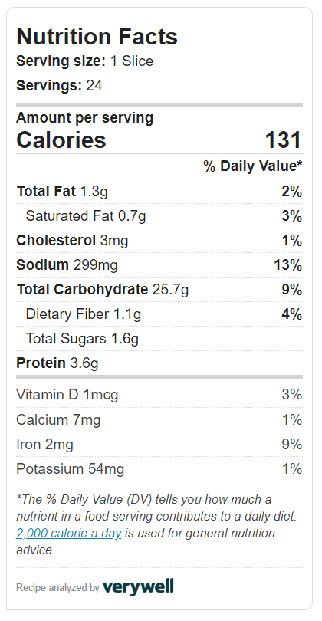
For simplicity’s sake, I sliced my two loaves into 12 slices each, for a total of 24 slices. This bread has a nice structure, so you could cut thinner slices without any issues. Keep in mind that thinner slices will have fewer calories per slice (and subsequently, thicker slices will have more calories).
Did You Try It?
I love hearing from readers. If you tried my recipe, let me know if you liked it in the comments below. Feel free to send me any suggestions for improving the recipe, too.

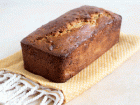
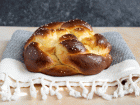
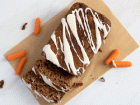
Thank you for the step by step instructions. I am a bit rusty at making bread and the pictures really helped. It turned out delicious! I was tempted to add a little sugar to the yeast water because my yeast did not seem to be doing much after 10 minutes, I gave a slight sprinkle of sugar and I saw more activity. I am sure it would have worked without it, but I got a little nervous. Thank you again, I loved it.
I’m so glad you liked the recipe! And that was smart to add sugar to get your yeast to proof. Sometimes yeast can be fickle, and that is a useful trick to get it going.
552 Grams of water instead of 627
That’s very precise and helpful! Lowering the hydration is definitely a great step for a lot of bakers. Thank you so much for your feedback.
Way too much water! I think I just wasted a bunch of ingredients and still need to find a good recipe
Tasha, I’m sorry you feel that you wasted ingredients. The great thing about bread is that you can add more flour or use less water to achieve a consistency that you enjoy. Another commenter recommended using only 552 grams of water – maybe try that amount next time? I personally prefer a higher hydration loaf because they tend to be softer and lighter, but I understand that can be difficult to work with for some. Also, it might help if you measure by weight rather than volume to ensure accuracy.
I made this bread. It was yummy! Is it possible to freeze half of the dough? My second loaf molded before I could use it all 😭 just didn’t eat it fast enough.
Thank you so much! I’m glad you enjoyed it. I personally haven’t tried freezing the dough, but I have frozen bread before! Just slice it and wrap each slice before putting it in the freezer, then toast the bread when you’re ready for it. I hope this helps.
so, can I use olive oil instead of butter? I assume you are adding melted butter and not just softened?
I’ve used vegetable oil with this recipe just fine – you’re correct that I’m using melted butter in the recipe. I think Olive oil will create a slightly different flavor profile but it shouldn’t affect the texture or actual baking process of the bread at all.
I did this once by the book on the first attempt. Very tasty but didnt proof the way i would have liked. Second attempt i proofed my yeast with a dash of honey. That helped my first dough proofing a lot and the second proofing i let it sit on the counter a while then stuck it in the oven at 140 until it rose to where i wanted it. Its baking now so ill try to come back and give an update on the adjustments
Oh I’m glad you can make adjustments that work better for you! Thank you for keeping us informed.
Wondering about using instant yeast in this recipe. Any suggestions? It happens to be what I have on hand at the moment.
Instant yeast is interchangeable with dry active yeast. You can even skip the time it takes for the yeast to go puffy. Happy baking!